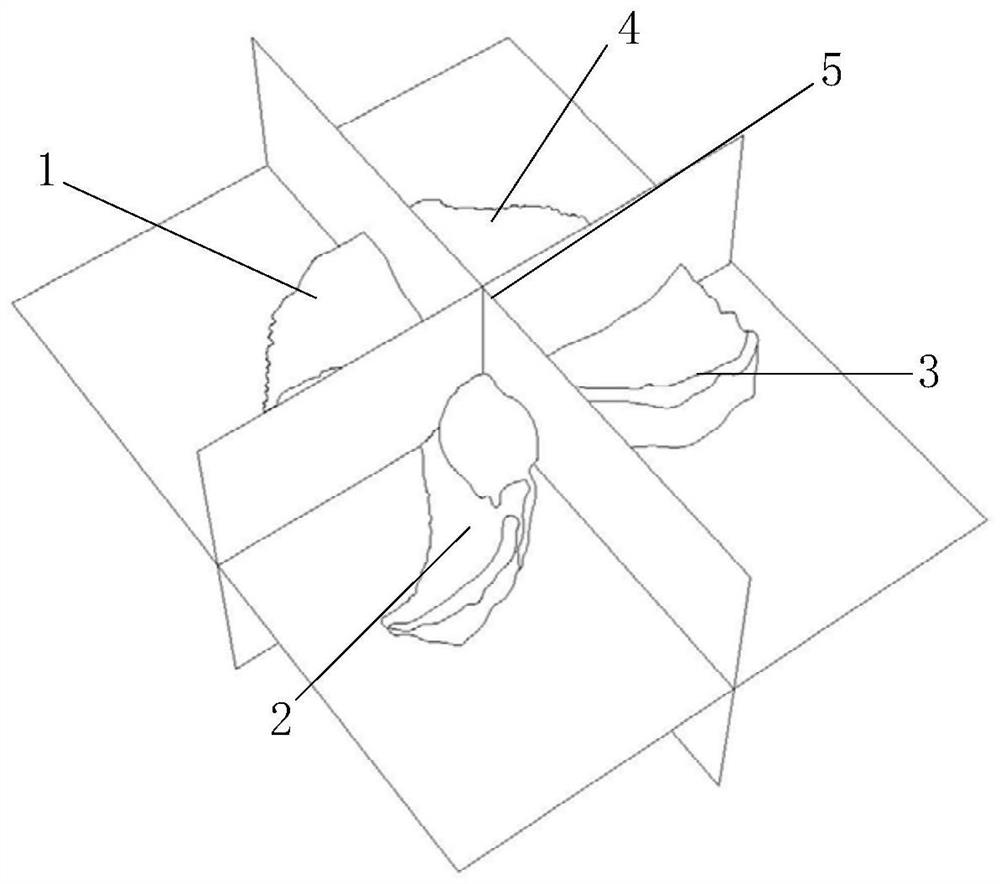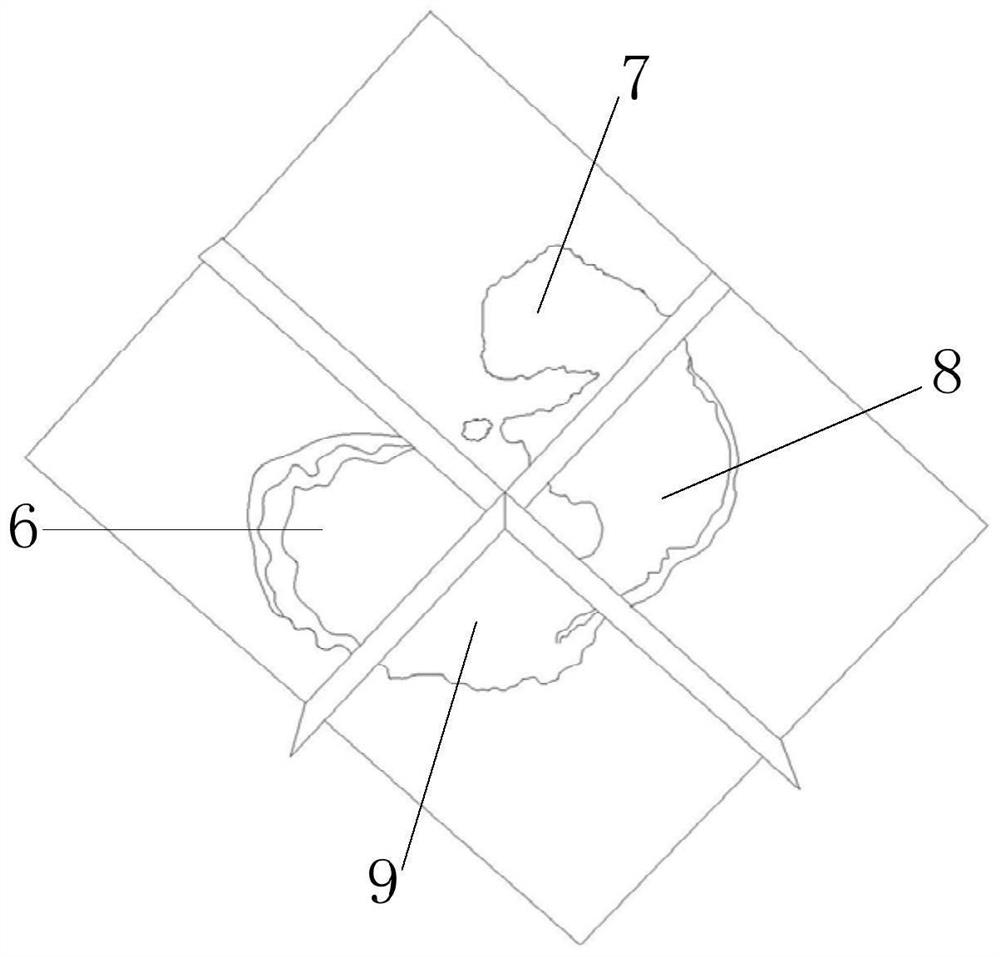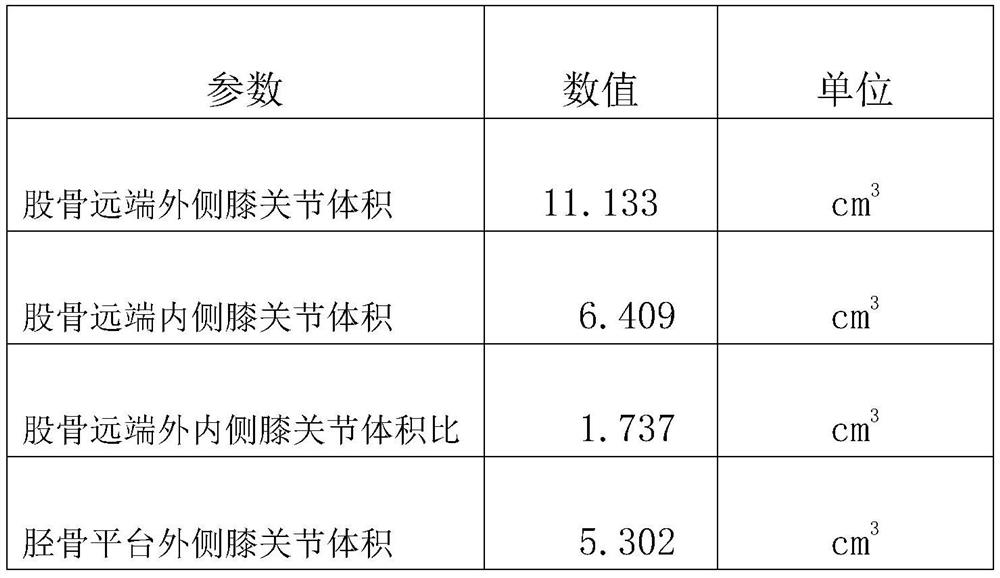A method for obtaining normal reference value of joint non-bone modeling partition volume ratio
An acquisition method and volume ratio technology, applied in the field of lower limb correction, can solve problems such as time-consuming, key angle errors, and difficulty in finding the highest point, so as to achieve good guiding effects and accurate judgment results
- Summary
- Abstract
- Description
- Claims
- Application Information
AI Technical Summary
Problems solved by technology
Method used
Image
Examples
Embodiment 1
[0065] A method for obtaining a normal reference value of a joint non-bone modeling partition volume ratio, comprising the steps of:
[0066] S1. Construct a knee joint cavity model;
[0067] S2. Find the geometric center point of the knee joint cavity model;
[0068] S3. Taking the geometric center point of the knee joint cavity model as the coordinate origin, establish a space rectangular coordinate system;
[0069] S4. Calculate the volume of the knee joint cavity in each hexagram of the space Cartesian coordinate system;
[0070] S5. According to the volume of the knee joint cavity, calculate the volume ratio of the lateral and medial knee joints of the distal end of the femur, the volume ratio of the lateral and medial knee joints of the tibial plateau, the volume ratio of the anterior and posterior knee joints of the distal femur, and the volume ratio of the anterior and posterior knee joints of the tibial plateau , get the normal reference value.
[0071] The method ...
Embodiment 2
[0076] A method for obtaining a normal reference value of a joint non-bone modeling partition volume ratio, comprising the steps of:
[0077] S1. Construct a knee joint cavity model;
[0078] S2. Find the geometric center point of the knee joint cavity model;
[0079] S3. Taking the geometric center point of the knee joint cavity model as the coordinate origin, establish a space rectangular coordinate system;
[0080] S4. Calculate the volume of the knee joint cavity in each hexagram of the space Cartesian coordinate system;
[0081] S5. According to the volume of the knee joint cavity, calculate the volume ratio of the lateral and medial knee joints of the distal end of the femur, the volume ratio of the lateral and medial knee joints of the tibial plateau, the volume ratio of the anterior and posterior knee joints of the distal femur, and the volume ratio of the anterior and posterior knee joints of the tibial plateau , get the normal reference value.
[0082] Further, be...
Embodiment 3
[0087] The difference between this embodiment and embodiment 1 is:
[0088] After step S5, step S6 is also included, where the obtained data of each volume ratio is normally distributed to obtain the normal reference value of each volume ratio, and construct a standard range comparison table.
[0089] The sampling in the step SO includes dividing the population by age groups, and randomly sampling the population of each age group.
[0090] By means of normal distribution, select the area with relatively concentrated values from each volume ratio as a reference value, and build a standard range comparison table to provide a data basis for the judgment of lower limb deformities; and through the crowd of different age groups Division, and random sampling in each age group, thereby making the normal reference value of the present invention more scientific and reasonable.
[0091] All the other parts are identical with embodiment 1.
PUM
 Login to View More
Login to View More Abstract
Description
Claims
Application Information
 Login to View More
Login to View More - R&D
- Intellectual Property
- Life Sciences
- Materials
- Tech Scout
- Unparalleled Data Quality
- Higher Quality Content
- 60% Fewer Hallucinations
Browse by: Latest US Patents, China's latest patents, Technical Efficacy Thesaurus, Application Domain, Technology Topic, Popular Technical Reports.
© 2025 PatSnap. All rights reserved.Legal|Privacy policy|Modern Slavery Act Transparency Statement|Sitemap|About US| Contact US: help@patsnap.com



